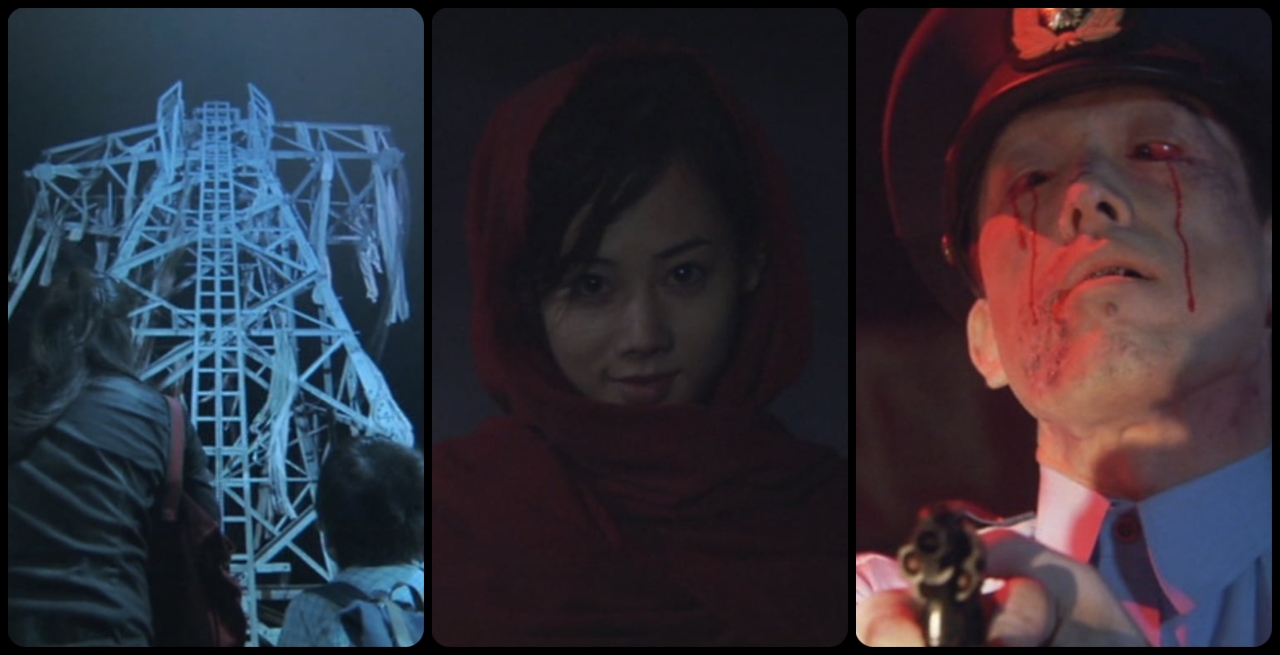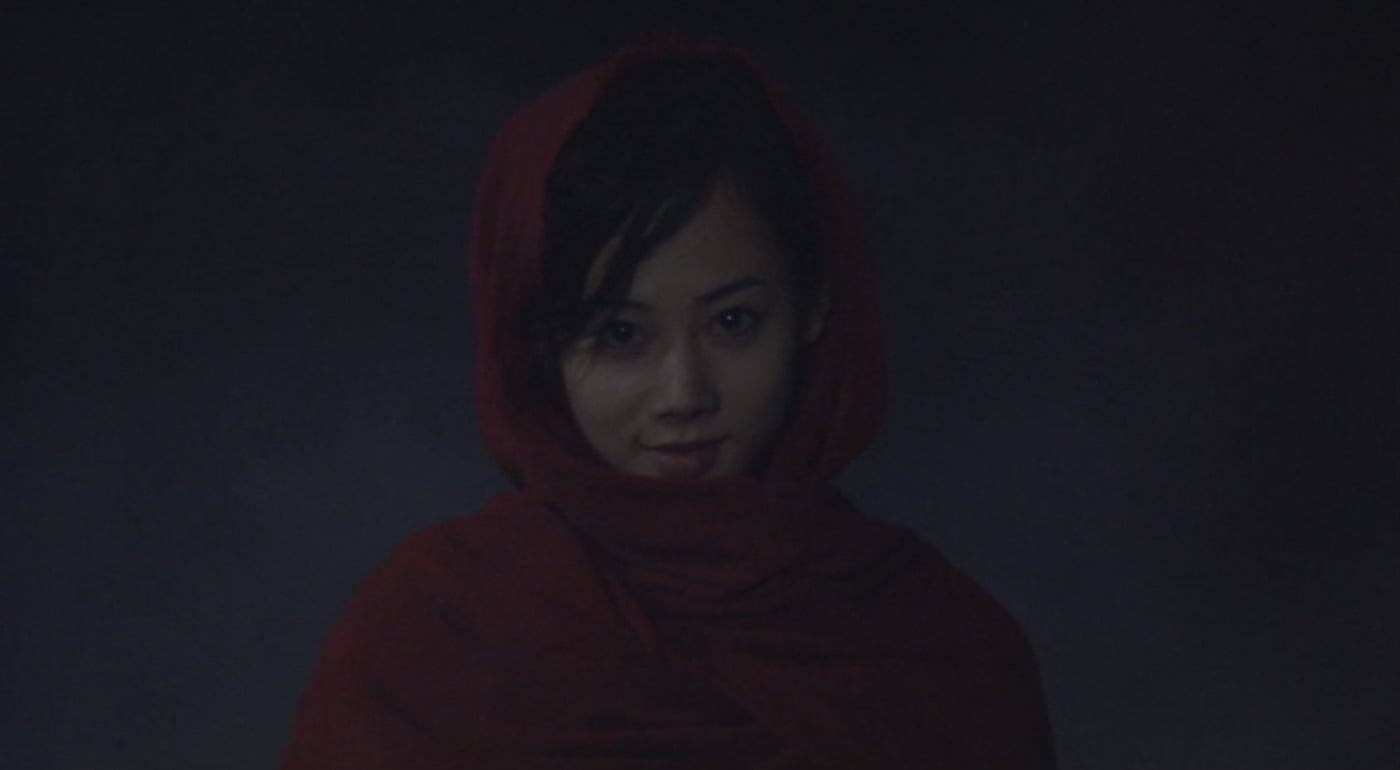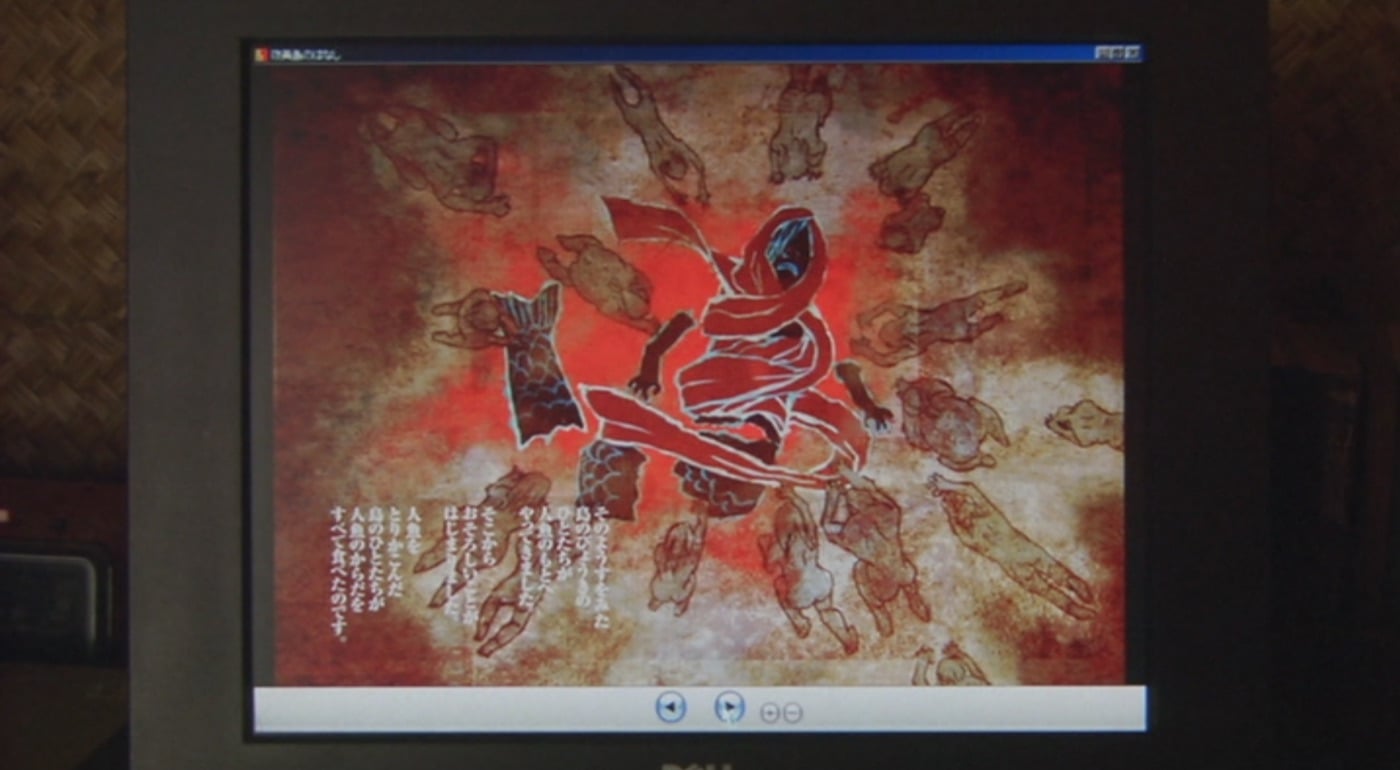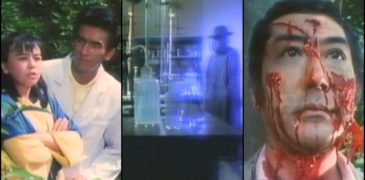
The Japanese horror game franchise Forbidden Siren (Siren), created by Keiichiro Toyama (also the creator of the first Silent Hill game and Gravity Rush) was created in 2004 and is made of three games (1 and 2 on PS2, a reboot for PS3), but its success led to side stories and eventually a huge extended universe. This could almost compete with Star Wars, even though a lot of the content was only released in Japan and can mostly count on fan-made translations: guide books (Siren Maniac 1 and 2), side stories (Strange Tales of Hanuda), secret websites (most of them now closed but some of them still running, like this one), a lot of manga series (Call of the Red Sea, Eternal Siren, Tamon Takeushi’s research notes, Voice of the Devil by Junji Ito, Memory of the Mermaid by Dajiro Morohoshi, Siren Rebirth which only got a French edition this year, etc), a novelization, and of course, a movie adaptation, Forbidden Siren (2006), which I’ll review here. Needless to say, this article is a purely subjective insight and doesn’t reflect facts.
The movie was issued the same week as the second Siren game (2006) in Japan as promotional material for the release and serves as a side story. It was directed by renowned filmmaker Yukihiko Tsutsumi and stars Yui Ichikawa, known for her role of Chiharu in the Ju-On: The Grudge film series. Other actors include Leo Morimoto, Naoki Tanaka, Hiroshi Abe, Naomi Nishida, and Mai Takahashi.

The plot takes place in the Yamijama island, the same place where Siren 2 unfolds (the best game of the series, in my opinion). It goes indeed with a different story, but you can tell the influence of the game with numerous references, hints, and easter eggs that should make the players smile (e.g. the Aztec Queen song, the memorable Konagihishoka lullaby, the presence of the actress Mai Takahashi as the Woman in Red who also played the roles of several characters in the game, etc). It does try hard to insert elements of the franchise, like the archives (the diary found by the heroin), or the fact of recreating strategies seen in the game, such as distracting the Shibitos with a diversion to escape or hiding. These details provide vibes that really remind us of the gaming experience, even if we’re still in front of a theater film. Those elements never really seem forced as pointless fan service would be. There are even references to the very first game besides Siren 2 (which I won’t spoil).
The fact that the film has a unique plot, not directly connected to the games, enriches the extended universe and lore of the franchise, adding one more side story. And, yes, not everybody would enjoy the end, but one can only admit this ambiguity and doubt it provides. A theme we see in the games as well. Mr. Toyama’s work always tends to play with our subjective perception of things and of the world, and the movie stays on this kind of topic. Sure, it’s been seen before, it’s not the most original plot twist at all, but I thought it was quite well done and moving. The movie also has its scary moments, especially during the second half (that house chase was intense), even though that might be my main criticism: it could have been way scarier, especially considering how scary the games can be, and some scenes from them would have perfectly suited the movie. With its clean cinematography and pretty images, the film is good-looking, but having more “dirty” and foggy visuals would have been a good way to reproduce more of the immersive and creepy atmosphere of the games.

Some viewers probably wish to have seen more body horror like Siren 2, with more Shibitos scenes and, why not, Yamibitos and Yamirei…but it would probably have felt out of place considering the film takes a total different direction, plot-wise. It’s actually supposed to be a prequel of Siren 2 but the connection is very low overall (except it occurs in the same island with similar elements and the story is quite independent and to work as a standalone, enjoyable for someone not familiar with the games).
The movie still feels pretty faithful with many references to Japanese folklore and mana religion, the isolation of the countryside and their traditional customs, ancient artifacts, creepy revelations about reality and time. The visuals, too, also felt quite close to the second gam in the major use of red as a colour, the foreboding metal tower and other similar locations. All these facilitate an effective side-story that’s lightly derivative from a core lore, kinda like the Fatal Frame 2014 movie, without being overpowering. Regardless the games, it’s also a pretty decent movie as entertainment where you follow the plot without getting bored or confused.
I would therefore recommend this one, both to the fans of Forbidden Siren and the J-horror fans in general. You don’t need to be a knowledgeable fan of the universe to follow this one and appreciate it as a standalone plot.
More Film Reviews
“When six young strangers are invited to a once-in-a-lifetime opportunity – an exclusive dinner party hosted by a charming and enigmatic host on the most romantic night of the year,… Door is a 1988 Japanese psychological horror thriller written and directed by Banmei Takahashi with additional writing from Ataru Oikawa. Beginning his career in Pinku Eiga in the 70s, Takahashi… I first saw Alejandro Jodorowsky’s surreal, bildungsroman film, Santa Sangre, in 1989 on VHS tape. Watching it was like watching a slasher about a killer with a twisted Oedipal Complex… The Group, a 2022 film written and directed by William Higo, is a compelling and thought-provoking horror/drama that delves deep into the complexities of addiction, loyalty, and the consequences of… Island of Death (Ta Paidia Tou Diavolou) is a 1976 exploitation horror film written and directed by Nico Mastorakis. Most notable as the founder and owner of independent film studio… Biotherapy is a Japanese 1986 sci-fi horror that’s aptly described as a slasher merged into a splatter creature feature. The short movie was released as a project from the limited…Most Horrible Things (2022) Film Review – Most Horrible Indeed!
Door (1988) Film Review – Home Invasion J-Horror [Fantastic Fest]
Santa Sangre (1989) Film Review – The Circus of Dreams and Nightmares
The Group (2022) Film Review – A Not-So-Safe Space
Island of Death (1976) Film Review – Horror on Mykonos Island
Biotherapy (1986) – An Unknown Japanese Sci-Fi Horror Short

Student and former short film maker, Anthony Auzy always loved scary stories and horror content, with a special fondness for Asian horror. It inspires him for poem books, short stories, short films and videos, and other creations. He like to dig hidden findings that may be overlooked or unnoticed, and I enjoy scary Asian games and spooky reads. Besides watching many J-horror movies, he keens on exploring how the movement was born and expanded in different forms of media, and study its cultural impact.

![Door (1988) Film Review – Home Invasion J-Horror [Fantastic Fest]](https://www.grimoireofhorror.com/wp-content/uploads/2023/09/Door-cover-365x180.jpg)



